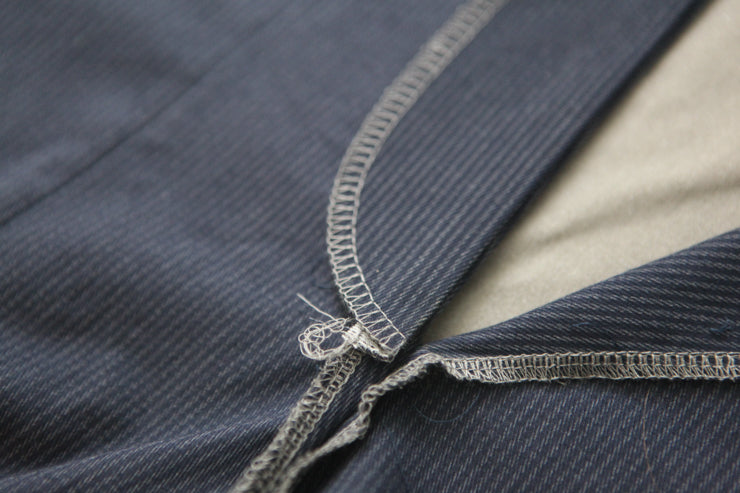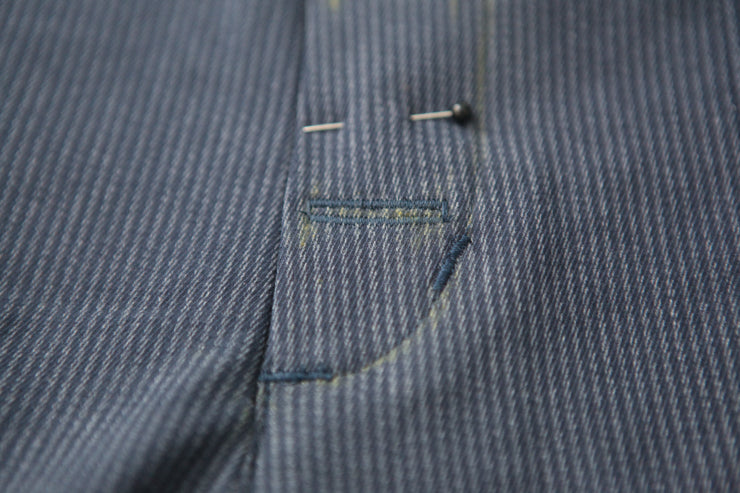Welcome back for more sewing today with the
Lander Sewalong. Today we are going to tackle the crotch and also the fly. If you have sewn normal zipper fly before, I think you will love trying this button fly. It's much easier. If you have never sewn a fly before all, this is a really good first one to start on.
Step 11 - First we are going to finish the seam allowances of each of the inner legs separately. I am going to serge them. They have to be done separately now so that they can be pressed open once stitched. Otherwise you will end up with a lot of bulk right at the bottom of your crotch which just isn't comfy.( I accidentally serged the crotches first. Don't do that. You can do that in step 12. Ooops.)
Pin one front to the coordinating back along the inner leg, right sides together. Stitch at your normal 1/2" seam allowance.
For Views B and C, you may find that the distance between the crotch and first notch is a bit longer on the back leg than the front, if so, you will need to stretch it slightly to fit.

Press seam allowances open. Repeat for other leg.
 Step 12
Step 12 - Finish the seam allowances of the right and left crotch separately.

Pin the left leg to the right leg along the crotch seam with right sides touching. Starting at center back and backstitching, stitch until you get to the dot on center front. Backstitch at dot to secure.
 Step 13
Step 13 - Finish the outside curved edge of the left fly with either a zig zag stitch or serger.

With right sides touching, pin the straight edge of the left fly to the center front edge of the left short or pant. Let the back pant and right front fall down and out of the way during this step. I like to put one pin right at the dot to help me know where to stop stitching.

Stitch from the top down to the dot and stop, backstitching. It's better to stop one or two stitches short, than to stitch too far. If you go too far and catch the right side, you will need to unpick. If you stop a bit too short, there will be more topstitching and such to secure that area in the next few steps so don't worry too much.

Grade the seam you just stitched by trimming the seam allowance of the interfaced fly to reduce bulk.
 Step 14
Step 14 - Flip the left fly to the inside of the left front and press.

Fold in the seam allowance of the bottom section of the fly that was not stitched and press.
 Step 15
Step 15 - With your pant right side out, place the stitching guide provided with your pattern pieces on the left fly.

Mark along the outside edge for the curved topstitching and transfer the markings for the buttonholes.


Starting at the top of the pant, sew the curved topstitching down the left fly, backstitching at the end.

Next, stitch the buttonholes.


Turn your garment inside out and clip the seam allowance of the right front crotch curve 1/2” below the dot.
 Step 16
Step 16 - Fold the right fly in half with right sides touching. Sew along the bottom angled edge.

Clip the corner and trim the seam allowance.

Turn right side out and press.

Finish the long open edge with a zigzag stitch or serger.
 Step 17
Step 17 - Like you did for the left side, pin the right fly to the right front. Let the left side and back fall down and out of the way.

Stitch from the waistline down until the dot. Backstitch to secure. Just like the left fly, it's better to be a few stitches too short than too long. Make sure that you are not catching the edge of the left fly in the process.

Flip the right fly to the inside of the short or pant.
 Step 18
Step 18 - Press the seam allowances below the clip towards the left pant. I like to use a tailor's ham to help get all of the seam allowances on the crotch towards the left leg without making any creases.


Topstitch at 1/8” through all layers from the right side, starting at the dot, backstitching, and ending at the top back waistline.

 Step 19
Step 19 - Pin the fly so that everything is laying flat and lined up. To help secure the fly, sew a small (about 1/2” long) bartack through all layers at the bottom of the curved stitching and another at an angle just below the first buttonhole. I like a zigzag width of about 2.5mm and length of about 0.2mm for my bartacks, but that is preference. You may want to try a few on some scrap fabric to figure out your preference.


That's it for today. Tomorrow we will completely finish our pants and shorts which includes sideseams, waistband, hemming, and buttons.
 Press seam allowances open. Repeat for other leg.
Press seam allowances open. Repeat for other leg.
 Step 12 - Finish the seam allowances of the right and left crotch separately.
Step 12 - Finish the seam allowances of the right and left crotch separately.
 Pin the left leg to the right leg along the crotch seam with right sides touching. Starting at center back and backstitching, stitch until you get to the dot on center front. Backstitch at dot to secure.
Pin the left leg to the right leg along the crotch seam with right sides touching. Starting at center back and backstitching, stitch until you get to the dot on center front. Backstitch at dot to secure.
 Step 13 - Finish the outside curved edge of the left fly with either a zig zag stitch or serger.
Step 13 - Finish the outside curved edge of the left fly with either a zig zag stitch or serger.
 With right sides touching, pin the straight edge of the left fly to the center front edge of the left short or pant. Let the back pant and right front fall down and out of the way during this step. I like to put one pin right at the dot to help me know where to stop stitching.
With right sides touching, pin the straight edge of the left fly to the center front edge of the left short or pant. Let the back pant and right front fall down and out of the way during this step. I like to put one pin right at the dot to help me know where to stop stitching.
 Stitch from the top down to the dot and stop, backstitching. It's better to stop one or two stitches short, than to stitch too far. If you go too far and catch the right side, you will need to unpick. If you stop a bit too short, there will be more topstitching and such to secure that area in the next few steps so don't worry too much.
Stitch from the top down to the dot and stop, backstitching. It's better to stop one or two stitches short, than to stitch too far. If you go too far and catch the right side, you will need to unpick. If you stop a bit too short, there will be more topstitching and such to secure that area in the next few steps so don't worry too much.
 Grade the seam you just stitched by trimming the seam allowance of the interfaced fly to reduce bulk.
Grade the seam you just stitched by trimming the seam allowance of the interfaced fly to reduce bulk.
 Step 14 - Flip the left fly to the inside of the left front and press.
Step 14 - Flip the left fly to the inside of the left front and press.
 Fold in the seam allowance of the bottom section of the fly that was not stitched and press.
Fold in the seam allowance of the bottom section of the fly that was not stitched and press.
 Step 15 - With your pant right side out, place the stitching guide provided with your pattern pieces on the left fly.
Step 15 - With your pant right side out, place the stitching guide provided with your pattern pieces on the left fly.
 Mark along the outside edge for the curved topstitching and transfer the markings for the buttonholes.
Mark along the outside edge for the curved topstitching and transfer the markings for the buttonholes.

 Starting at the top of the pant, sew the curved topstitching down the left fly, backstitching at the end.
Starting at the top of the pant, sew the curved topstitching down the left fly, backstitching at the end.
 Next, stitch the buttonholes.
Next, stitch the buttonholes.

 Turn your garment inside out and clip the seam allowance of the right front crotch curve 1/2” below the dot.
Turn your garment inside out and clip the seam allowance of the right front crotch curve 1/2” below the dot.
 Step 16 - Fold the right fly in half with right sides touching. Sew along the bottom angled edge.
Step 16 - Fold the right fly in half with right sides touching. Sew along the bottom angled edge.
 Clip the corner and trim the seam allowance.
Clip the corner and trim the seam allowance.
 Turn right side out and press.
Turn right side out and press.
 Finish the long open edge with a zigzag stitch or serger.
Finish the long open edge with a zigzag stitch or serger.
 Step 17 - Like you did for the left side, pin the right fly to the right front. Let the left side and back fall down and out of the way.
Step 17 - Like you did for the left side, pin the right fly to the right front. Let the left side and back fall down and out of the way.
 Stitch from the waistline down until the dot. Backstitch to secure. Just like the left fly, it's better to be a few stitches too short than too long. Make sure that you are not catching the edge of the left fly in the process.
Stitch from the waistline down until the dot. Backstitch to secure. Just like the left fly, it's better to be a few stitches too short than too long. Make sure that you are not catching the edge of the left fly in the process.
 Flip the right fly to the inside of the short or pant.
Flip the right fly to the inside of the short or pant.
 Step 18 - Press the seam allowances below the clip towards the left pant. I like to use a tailor's ham to help get all of the seam allowances on the crotch towards the left leg without making any creases.
Step 18 - Press the seam allowances below the clip towards the left pant. I like to use a tailor's ham to help get all of the seam allowances on the crotch towards the left leg without making any creases.

 Topstitch at 1/8” through all layers from the right side, starting at the dot, backstitching, and ending at the top back waistline.
Topstitch at 1/8” through all layers from the right side, starting at the dot, backstitching, and ending at the top back waistline.

 Step 19 - Pin the fly so that everything is laying flat and lined up. To help secure the fly, sew a small (about 1/2” long) bartack through all layers at the bottom of the curved stitching and another at an angle just below the first buttonhole. I like a zigzag width of about 2.5mm and length of about 0.2mm for my bartacks, but that is preference. You may want to try a few on some scrap fabric to figure out your preference.
Step 19 - Pin the fly so that everything is laying flat and lined up. To help secure the fly, sew a small (about 1/2” long) bartack through all layers at the bottom of the curved stitching and another at an angle just below the first buttonhole. I like a zigzag width of about 2.5mm and length of about 0.2mm for my bartacks, but that is preference. You may want to try a few on some scrap fabric to figure out your preference.

 That's it for today. Tomorrow we will completely finish our pants and shorts which includes sideseams, waistband, hemming, and buttons.
That's it for today. Tomorrow we will completely finish our pants and shorts which includes sideseams, waistband, hemming, and buttons.

